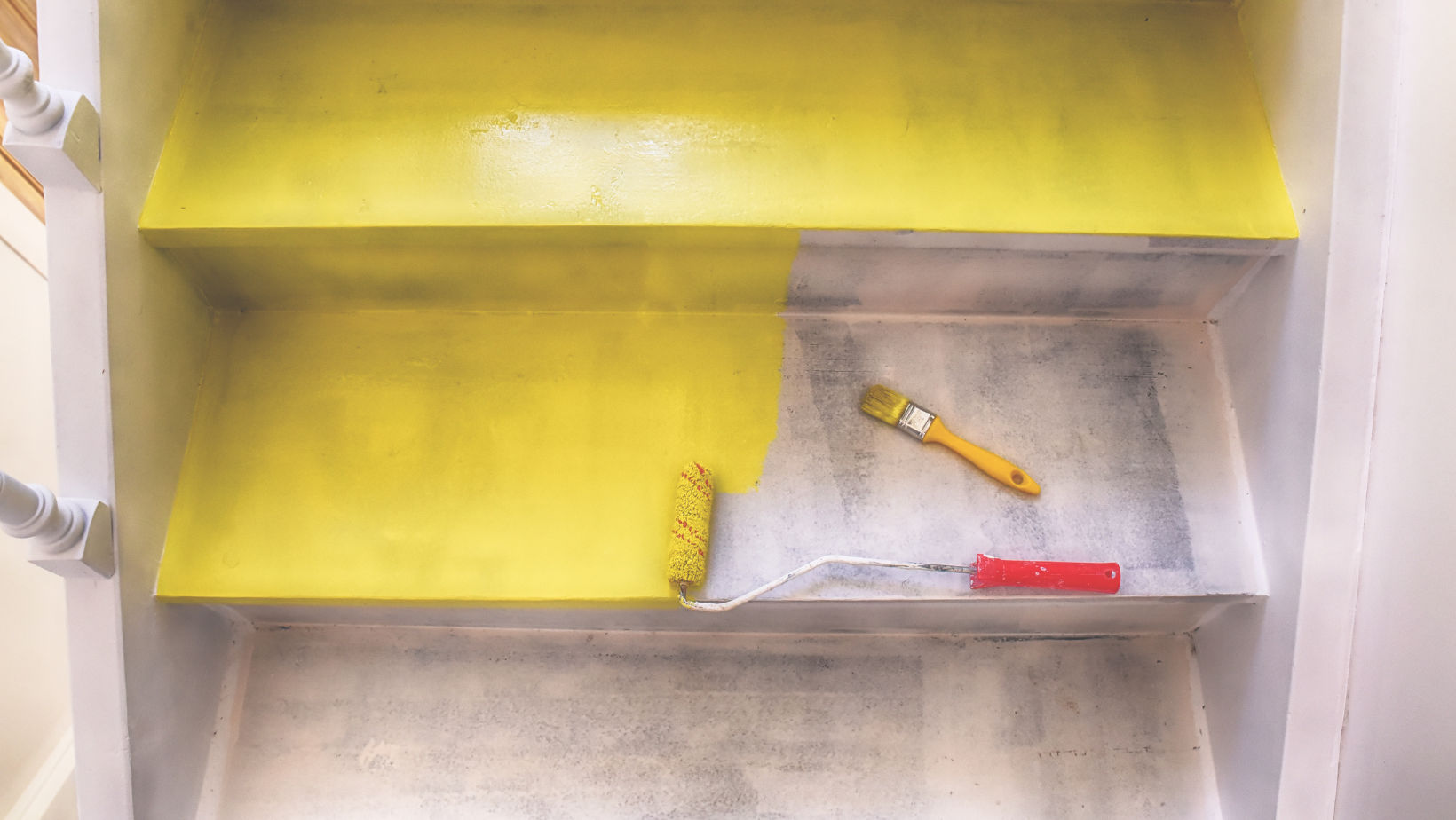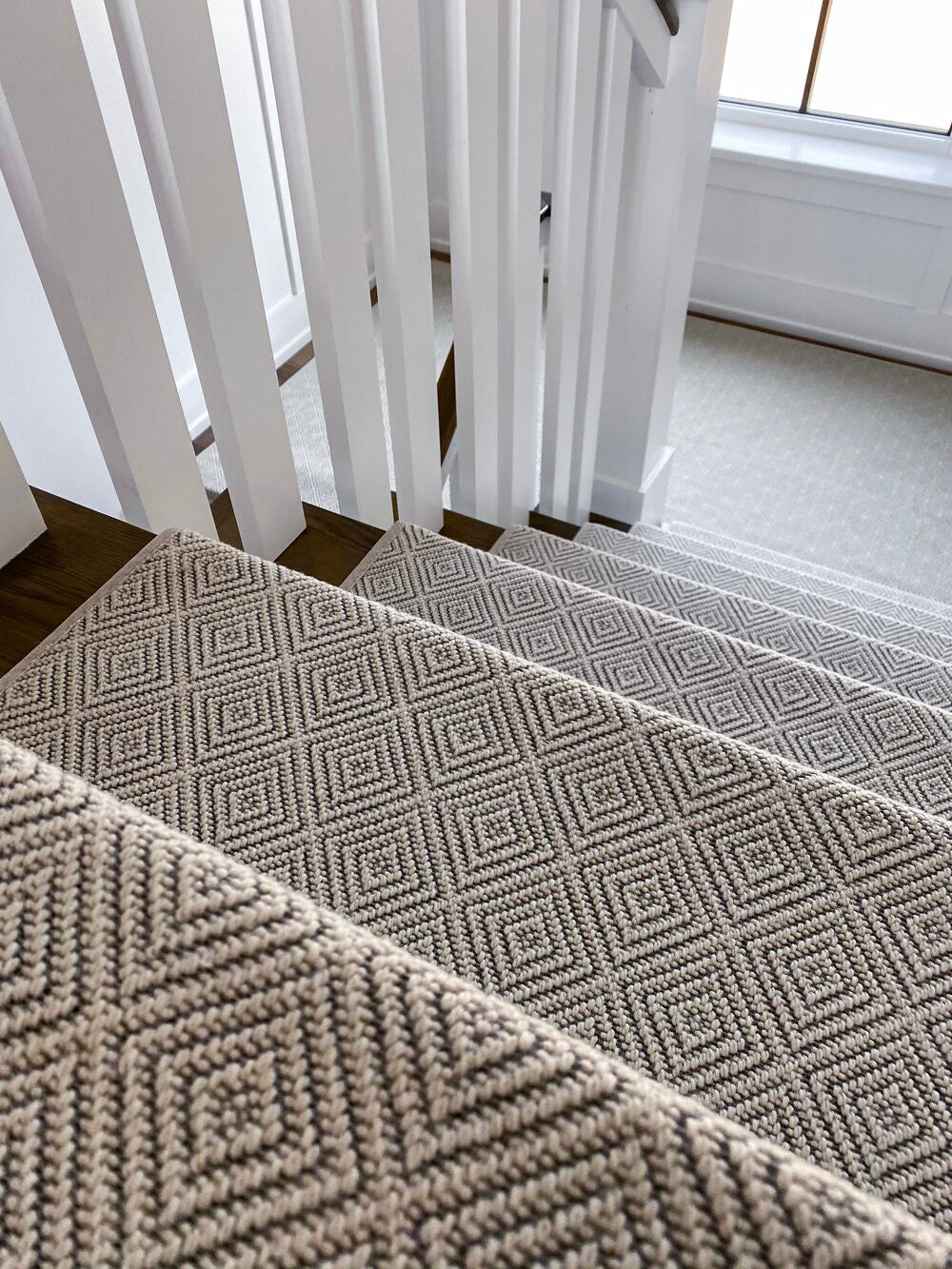Loose steps, unsightly gaps, or noisy creaks—small issues like these can signal a bigger problem with your staircase.
So, do you caulk stair treads?
Yes, you should caulk stair treads to seal gaps, prevent moisture damage, and create a secure surface before installing upgrades like carpet stair treads.
In this article, you’ll learn when caulking is necessary, how it supports safety and durability, and why it’s essential for any stair retrofit or tread update.
We’ll also show you how to properly apply caulk and maintain your stairs over time.
Whether you’re making cosmetic changes or structural improvements, this guide will help you do it right.
Why Caulking Stair Treads Matters More Than You Think
Caulking creates a protective barrier between stair treads and risers.
Over time, stairs shift, contract, or develop small gaps due to wood settling, age, or seasonal humidity.
Left untreated, these cracks can become more than cosmetic—they can affect how secure your staircase feels and functions.
Without caulk, moisture, air, dust, and debris can creep into these open seams.
That causes wood to warp, treads to loosen, and even mold to develop.
And once your stairs start moving, slipping, or squeaking, you’ve got more than just a design issue—you’ve got a safety hazard.
A Quick Fix for Messy Caulk: Use Carpet Stair Treads
Let’s be real—sometimes the original caulking job just isn’t pretty. Maybe it’s cracked.
Maybe it’s smeared. Maybe it’s pulling away from the wood.
If you want a fast, elegant solution without the mess of tearing it all out and starting over, add a layer of luxury with carpet stair treads.
They cover imperfections instantly, soften your steps, and bring warmth and texture to the space.
It’s the easiest way to make your stairs look polished without needing to completely redo the existing caulk work.
What Exactly Is Caulking, and How Does It Apply to Stair Treads?
Caulking is a sealing material, typically acrylic latex, used to close gaps between two surfaces.
In staircases, it’s most often applied where stair treads meet the risers or walls.
This creates a moisture-resistant, airtight bond that keeps the structure secure and helps maintain a clean, uniform appearance.
You might already associate caulk with bathtubs or windows, but in high-traffic areas like stairs, it plays an equally important role.
It’s not just about looks—it’s about preserving the life and safety of your staircase.
Key Reasons to Caulk Your Stair Treads
-
Prevents Moisture Damage: Especially in homes with changing humidity levels, caulk blocks water and air from seeping into seams and causing swelling or rot.
-
Improves Safety: Loose or cracked treads can shift underfoot. Caulking reduces that risk by locking joints tightly together.
-
Enhances Appearance: A clean bead of caulk gives stairs a professional, finished look, especially in stained or painted wood staircases.
-
Prepares the Surface for Upgrades: Whether you’re installing carpet stair treads or tackling a stair retrofit project, caulking is a necessary base layer.
Do You Caulk Stair Treads Before Installing Carpet Treads?
Yes—always.
Even if you plan to cover your treads with carpet, it’s critical to seal gaps first.
Caulk adds stability and prevents shifting beneath the carpet tread, which could lead to uneven steps or long-term wear.
It also prevents moisture from collecting underneath the carpet, which can lead to mold or warped wood.
Carpet treads are meant to be a finishing touch—not a patch job over poor prep.
So if you're planning to upgrade with carpet stair treads, start by making sure your caulking is in good condition.
It’s the kind of hidden detail that makes a noticeable difference.
How to Properly Caulk Stair Treads
You don’t need to be a professional to get a clean, long-lasting result to properly caulk stair treads.
Just the right tools and a few extra minutes of care.
Choose the Right Caulk
Use high-quality acrylic latex caulk.
It’s flexible, durable, and paintable, making it ideal for wood stairs that see daily wear and tear.
Clean the Surface
Wipe away any dirt, dust, or old caulk.
If necessary, use a latex paint remover spray to get back to a clean surface.
This step ensures the new caulk adheres properly.
Apply the Caulk Smoothly
Use a battery-powered caulking gun to apply a consistent bead where the tread meets the riser or side wall.
Use a caulking tool or your finger to smooth it into a clean line.
Allow to Cure
Follow the product’s directions for drying time—usually 24 hours—before painting, sealing, or applying carpet treads.
Ongoing Maintenance for Caulked Stair Treads
Just like any part of your home, caulk needs routine checks.
Every six months, inspect for cracking or separation.
Reapply as needed to prevent water damage or movement in the stairs.
Regular cleaning with a damp cloth and mild soap helps keep the area looking fresh.
Avoid harsh chemicals that can break down the caulk over time.
How Caulking Improves Stair Safety
Slips and trips often start with uneven surfaces.
Caulking eliminates those micro-gaps that might catch a foot or shift under pressure.
In homes with children, seniors, or pets, this small detail can make a big difference.
Combined with carpet stair treads, caulking creates a secure, soft, and slip-resistant surface that protects everyone in the household.
Even if your stairs are solid wood, a good caulk job adds traction and reduces movement.
It reinforces structural integrity with every step.
Caulking and Stair Retrofits: How to Cover Stair Treads
If you’re working on a stair retrofit—remodeling or covering old treads—caulking becomes even more important.
Many homeowners ask how to cover stair treads without realizing the foundation is what determines the final look and feel.
If the original stair components aren’t sealed properly, your upgrade might not last.
Whether you're installing new hardwood treads over old ones or adding modern carpet stair treads, caulking is the first and final line of defense against moisture, squeaks, and instability.
Before covering stair treads in any retrofit project, inspect the seams and fill any cracks with caulk.
Let it cure fully before moving on.
This sets the stage for a lasting upgrade—one that looks as good five years from now as it does today.
How Do I Make My Stair Treads Deeper? Start With Caulking
If you’re exploring how to make stair treads deeper, you’re likely dealing with a safety or code issue.
Deeper treads provide more landing space and reduce the steepness of your stairs.
Once you've extended the depth—typically by adding a stair nose extension or retro tread—you’ll have new joints between materials.
These need to be sealed.
Caulking helps merge the old tread and new extension into a seamless step.
It also reinforces the transition, ensuring there’s no shifting, cracking, or water intrusion.
Without caulk, your deeper treads might still creak, flex, or split over time.
What Happens If You Don’t Caulk Stair Treads?
Skipping this step may not show immediate damage, but over time it adds up:
-
Water and dust collect in seams
-
Wood swells, cracks, or softens
-
Treads start to shift or come loose
-
Mold or mildew can develop under the surface
-
Carpet stair treads won’t sit flat or grip well
These issues don’t just affect appearance—they shorten the life of your stairs and increase the risk of accidents.
Pair Caulk with Carpet Stair Treads for a Complete Staircase Makeover
Once your stair treads are sealed and stable, you’re ready for the best part—adding character.
Carpet stair treads bring color, texture, and traction to the space.
At Oak Valley Designs, our treads are handcrafted to fit seamlessly over your prepped stair surface. From timeless wools to pet-friendly synthetics, each tread is built to handle real life.
Combined with strong caulking underneath, our stair treads stay flat, clean, and secure.
Steps To Success
From safety to style, caulking stair treads lays the groundwork for a staircase you can rely on.
Whether you’re doing a simple refresh or a full stair retrofit, caulking strengthens every step—literally.
It keeps your structure intact, your surfaces smooth, and your upgrades long-lasting.
If you’re planning to install carpet stair treads or deepen your stair steps, start with a clean bead of caulk.
It’s the foundation of a better, safer home.
Ready to take your stairs from functional to flawless?
Contact Us Today!
-
Website: https://oakvalleydesigns.com/
-
Phone: 706.331.0315
-
Email: info@oakvalleydesigns.com
-
Address: 30 River Ct SW Bldg E Cartersville, Ga 30120




